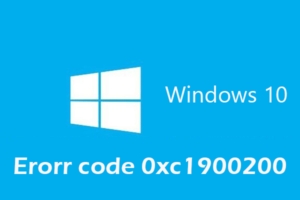-
Table of Contents
- How to Customize Taskbar Buttons in Windows 11 for Enhanced Productivity
- Exploring the Benefits of Separating Taskbar Buttons in Windows 11
- Maximizing Efficiency: A Guide to Individual Taskbar Buttons in Windows 11
- Enhancing Multitasking in Windows 11: Taskbar Button Customization Tips
- Unleashing the Power of Taskbar Button Separation in Windows 11
- Q&A
“Enhance your computing experience with Windows 11: Never combine taskbar buttons.”
Windows 11 offers a range of features and customization options to enhance the computing experience. One such feature is the ability to enable or disable the combining of taskbar buttons. By choosing to never combine taskbar buttons, users can have a more detailed and organized view of their open applications and windows. This allows for easier navigation and quick access to specific tasks, ultimately improving productivity and efficiency.
How to Customize Taskbar Buttons in Windows 11 for Enhanced Productivity
Windows 11 offers a range of customization options to enhance your computing experience. One such option is the ability to enable or disable the feature that combines taskbar buttons. By default, Windows 11 combines taskbar buttons to save space and provide a cleaner look. However, if you prefer a more detailed and organized taskbar, you can easily disable this feature.
To customize taskbar buttons in Windows 11, you need to access the taskbar settings. Right-click on an empty space on the taskbar and select “Taskbar settings” from the context menu. This will open the Taskbar settings window, where you can find various options to personalize your taskbar.
In the Taskbar settings window, scroll down to the “Combine taskbar buttons” section. Here, you will see three options: “Always, hide labels,” “When taskbar is full,” and “Never.” The default option is “Always, hide labels,” which combines taskbar buttons and only displays the icons. This option is useful if you want to save space on the taskbar and have a cleaner look.
However, if you prefer a more detailed computing experience, you can choose the “Never” option. This option will disable the combining of taskbar buttons and display each open window as a separate button on the taskbar. By enabling this option, you can easily switch between different open windows without the need to hover over the combined buttons to find the desired window.
Disabling the combining of taskbar buttons can significantly enhance your productivity, especially if you work with multiple applications simultaneously. With each open window having its own button on the taskbar, you can quickly identify and switch to the desired window without any confusion.
Furthermore, the “Never” option allows you to see the labels of each open window on the taskbar. This can be particularly helpful when you have multiple instances of the same application open. Instead of relying solely on the icons, you can easily identify the specific instance you need by reading the labels.
Customizing taskbar buttons in Windows 11 is a simple yet effective way to tailor your computing experience to your preferences. Whether you prefer a clean and minimalistic taskbar or a more detailed and organized one, Windows 11 provides the flexibility to choose what works best for you.
In conclusion, enabling the “Never” option to disable the combining of taskbar buttons in Windows 11 can greatly enhance your computing experience. By having each open window displayed as a separate button with labels, you can easily switch between applications and instances, improving your productivity. Take advantage of the customization options in Windows 11 to personalize your taskbar and create a computing environment that suits your needs.
Exploring the Benefits of Separating Taskbar Buttons in Windows 11
Windows 11, the latest operating system from Microsoft, brings a host of new features and improvements to enhance the computing experience. One such feature is the ability to separate taskbar buttons, allowing users to have a more detailed and organized workspace. In this article, we will explore the benefits of separating taskbar buttons in Windows 11 and how it can contribute to a more efficient and productive computing experience.
One of the primary advantages of separating taskbar buttons is the ability to easily distinguish between different open applications. When taskbar buttons are combined, it can be challenging to identify which button corresponds to which application, especially when multiple instances of the same application are open. By separating taskbar buttons, users can quickly locate and switch between different applications, saving valuable time and effort.
Furthermore, separating taskbar buttons allows for better organization and management of open windows. With combined taskbar buttons, all open windows of the same application are grouped together under a single button. This can lead to clutter and confusion, particularly when working with multiple documents or projects simultaneously. By separating taskbar buttons, users can have a clear and organized view of all open windows, making it easier to navigate and switch between them.
Another benefit of separating taskbar buttons is the improved accessibility it provides. With combined taskbar buttons, accessing specific windows or applications requires an additional step of clicking on the grouped button and then selecting the desired window. This can be cumbersome, especially for users with limited dexterity or mobility. By separating taskbar buttons, users can directly click on the desired button to access the corresponding window, eliminating the need for an extra click and streamlining the workflow.
In addition to improved accessibility, separating taskbar buttons also enhances multitasking capabilities. With combined taskbar buttons, it can be challenging to keep track of multiple open windows and switch between them efficiently. By separating taskbar buttons, users can have a clear visual representation of all open windows, making it easier to prioritize and manage tasks. This can significantly boost productivity, especially for users who frequently work with multiple applications simultaneously.
Moreover, separating taskbar buttons allows for a more personalized computing experience. With combined taskbar buttons, the taskbar can quickly become cluttered, especially when there are numerous open windows. By separating taskbar buttons, users can customize the taskbar layout according to their preferences and workflow. They can arrange the buttons in a way that makes the most sense to them, ensuring quick and easy access to frequently used applications or windows.
In conclusion, separating taskbar buttons in Windows 11 offers numerous benefits that contribute to a more detailed and efficient computing experience. It allows for easy identification and switching between different applications, better organization and management of open windows, improved accessibility, enhanced multitasking capabilities, and a more personalized workspace. By taking advantage of this feature, users can optimize their workflow, save time, and increase productivity. So, if you’re looking to enhance your computing experience, consider enabling the option to never combine taskbar buttons in Windows 11.
Maximizing Efficiency: A Guide to Individual Taskbar Buttons in Windows 11
Windows 11, the latest operating system from Microsoft, brings a host of new features and improvements to enhance the computing experience. One such feature is the ability to enable individual taskbar buttons, allowing users to have a more detailed and efficient workflow. By disabling the default setting of combining taskbar buttons, users can have a clearer overview of their open applications and easily switch between them.
When multiple applications are open, Windows 11, by default, combines the taskbar buttons into a single button with a number indicating the number of open windows. While this can be useful to save space on the taskbar, it can also make it difficult to quickly identify and switch between specific applications. By enabling individual taskbar buttons, users can have a more organized and detailed view of their open applications.
To enable individual taskbar buttons in Windows 11, follow these simple steps. First, right-click on an empty space on the taskbar to open the context menu. Then, select “Taskbar settings” from the menu. In the Taskbar settings window, scroll down to the “Combine taskbar buttons” option. By default, it is set to “Always” or “When taskbar is full.” To enable individual taskbar buttons, select the “Never” option. Once selected, each open application will have its own button on the taskbar, providing a more detailed and efficient computing experience.
Enabling individual taskbar buttons can greatly enhance productivity and efficiency. With each application having its own button, users can easily identify and switch between them with a single click. This eliminates the need to hover over a combined button and select the desired window from a thumbnail preview. It also reduces the chances of accidentally selecting the wrong window, saving valuable time and effort.
Furthermore, individual taskbar buttons allow users to have a clearer overview of their open applications. With combined buttons, it can be challenging to differentiate between similar-looking thumbnail previews. By having separate buttons, users can quickly identify the application they need, even if they have multiple instances of the same application open.
In addition to improving workflow, individual taskbar buttons can also enhance multitasking capabilities. With each application having its own button, users can easily rearrange and organize their open windows on the taskbar. This makes it easier to group related applications together or prioritize certain applications based on their importance or frequency of use.
While enabling individual taskbar buttons can be beneficial for most users, it may not be suitable for everyone. Users with limited screen space or those who prefer a minimalist taskbar may find the combined buttons option more suitable. It ultimately comes down to personal preference and the specific needs of each user.
In conclusion, enabling individual taskbar buttons in Windows 11 can greatly enhance productivity, efficiency, and multitasking capabilities. By having a more detailed and organized view of open applications, users can easily switch between them and have a clearer overview of their computing tasks. Whether for work or leisure, this feature allows for a more seamless and enjoyable computing experience. So, why not give it a try and see how it can improve your workflow?
Enhancing Multitasking in Windows 11: Taskbar Button Customization Tips
Windows 11, the latest operating system from Microsoft, brings a host of new features and improvements to enhance the computing experience. One such feature is the ability to customize taskbar buttons, allowing users to have a more detailed and organized multitasking experience. By enabling the option to never combine taskbar buttons, users can have a clearer view of their open applications and easily switch between them.
Multitasking has become an integral part of our daily lives, whether it’s for work or leisure. With the increasing number of applications and windows open at any given time, it can sometimes become overwhelming to keep track of everything. This is where the taskbar comes in handy, providing a convenient way to access and switch between open applications. However, by default, Windows 11 combines taskbar buttons for the same application, which can make it difficult to differentiate between multiple instances of the same program.
To overcome this challenge and have a more detailed computing experience, users can choose to enable the option to never combine taskbar buttons. This option can be accessed by right-clicking on an empty space on the taskbar and selecting “Taskbar settings.” In the settings window, scroll down to the “Combine taskbar buttons” section and choose the “Never” option from the drop-down menu.
Once this option is enabled, each open application will have its own individual button on the taskbar, regardless of whether it is the same program or not. This allows users to easily identify and switch between different instances of an application, making multitasking a breeze. Whether you have multiple Word documents open or several browser windows, each will have its own dedicated button on the taskbar, providing a clear visual representation of your open applications.
Not only does this customization option enhance multitasking, but it also improves productivity. With a detailed taskbar, users can quickly locate and switch to the desired application without wasting time searching through a cluttered taskbar. This is particularly useful when working on multiple projects simultaneously or when needing to reference information from different sources.
Furthermore, enabling the never combine taskbar buttons option can also help in organizing your workflow. By having separate buttons for each open application, you can arrange them in a way that makes sense to you. For example, you can group related applications together or prioritize frequently used ones. This level of customization allows for a more personalized and efficient computing experience.
In conclusion, Windows 11 offers users the ability to customize their taskbar buttons, enabling a more detailed and organized multitasking experience. By choosing to never combine taskbar buttons, users can easily differentiate between multiple instances of the same application and switch between them effortlessly. This customization option not only enhances productivity but also allows for a more personalized workflow. So, if you want to take your multitasking to the next level and have a more detailed computing experience, consider enabling the never combine taskbar buttons option in Windows 11.
Unleashing the Power of Taskbar Button Separation in Windows 11
Windows 11, the latest operating system from Microsoft, brings a host of new features and improvements to enhance the computing experience. One such feature is the ability to never combine taskbar buttons, which allows for a more detailed and organized workflow. By enabling this option, users can have a clearer view of their open applications and easily switch between them.
Taskbar button separation is a powerful tool that can greatly improve productivity. When multiple windows of the same application are open, Windows 11, by default, combines them into a single button on the taskbar. While this can save space, it can also make it difficult to quickly identify and switch between different instances of the same application.
By enabling the “never combine taskbar buttons” option, users can have a more detailed view of their open applications. Each window will have its own individual button on the taskbar, making it easier to identify and switch between them. This is particularly useful when working with multiple documents or projects simultaneously, as it allows for a more organized and efficient workflow.
To enable this option, users can right-click on an empty space on the taskbar and select “Taskbar settings” from the context menu. In the Taskbar settings window, they can scroll down to the “Combine taskbar buttons” section and choose the “Never” option. Once enabled, the taskbar buttons will no longer be combined, providing a more detailed and comprehensive view of open applications.
This feature is especially beneficial for users who work with a wide range of applications and frequently switch between them. It eliminates the need to hover over a combined button to see a thumbnail preview of each window, as each window will have its own dedicated button on the taskbar. This saves time and effort, allowing for a smoother and more efficient workflow.
Furthermore, the ability to never combine taskbar buttons can also be advantageous for users who prefer a more visually organized desktop. With each window having its own button, it becomes easier to arrange and manage open applications. Users can drag and drop buttons to rearrange them according to their preference, creating a customized and personalized workspace.
In addition to the improved organization and productivity, enabling this option can also enhance multitasking capabilities. With a clear and detailed view of open applications, users can effortlessly switch between different tasks, making it easier to juggle multiple projects or assignments. This can be particularly useful for professionals who need to work on various tasks simultaneously or for students who need to access multiple resources while studying.
In conclusion, enabling the “never combine taskbar buttons” option in Windows 11 can greatly enhance the computing experience. It provides a more detailed and organized view of open applications, making it easier to switch between them. This feature is particularly beneficial for users who work with multiple instances of the same application or frequently switch between different tasks. By enabling this option, users can unleash the power of taskbar button separation and enjoy a more efficient and productive workflow.
Q&A
1. What is the purpose of enabling Windows 11 to never combine taskbar buttons?
To provide a more detailed computing experience by displaying individual taskbar buttons for each open application or window.
2. How can I enable Windows 11 to never combine taskbar buttons?
Right-click on the taskbar, select “Taskbar settings,” scroll down to the “Combine taskbar buttons” option, and choose “Never” from the drop-down menu.
3. What are the benefits of never combining taskbar buttons in Windows 11?
It allows for easier navigation and switching between open applications, as each application has its own dedicated button on the taskbar.
4. Are there any drawbacks to enabling Windows 11 to never combine taskbar buttons?
The taskbar may become cluttered if there are many open applications, potentially reducing the available space for other icons or shortcuts.
5. Can I customize the behavior of taskbar buttons in Windows 11?
Yes, Windows 11 provides options to customize the taskbar behavior, including combining buttons, hiding labels, or displaying only icons for a more streamlined or compact view.Enabling the “Never combine taskbar buttons” option in Windows 11 can provide a more detailed computing experience. This option allows each open application to have its own individual button on the taskbar, making it easier to switch between different programs and tasks. By avoiding the grouping of taskbar buttons, users can quickly identify and access specific applications, enhancing productivity and efficiency.







![[Solved]: “Error Code 0xC004F050” in Windows 11 in No Time](https://www.tipsbin.net/wp-content/uploads/2023/08/8e64f519d2390bfc001a41744be2cbd4-300x199.jpeg)

